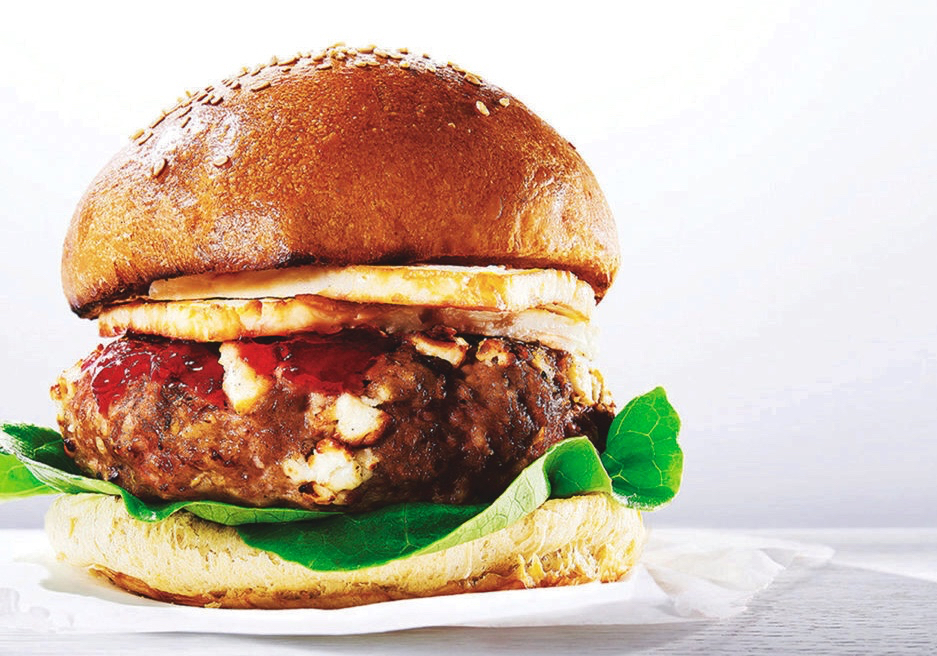“It’s going to grow.”
– IAN BARNETT, FORT WHYTE ALIVE
It’s been a late, cool spring but lettuce and spinach are finally starting to poke through the soil on Simon Hon’s farm. Hon and three fellow workers are already watering the emerging plants and getting herb and tomato seedlings ready for planting.
As he carefully spades the heavy clay soil, Hon dreams of selling his first crop of fresh produce at farmers’ markets and even to local restaurants.
Read Also

Canadian hemp stable, but stuck on growth
Canada’s hemp industry hopes hybrid varieties, better yields, clearer regulations and new markets can help the crop break past its ceiling and get Canadian farmers planting more hemp acres.
Hon worked on someone else’s farm near St. Adolphe for seven years. Now he finally has his own, though it’s probably the smallest agricultural enterprise in Manitoba, with the most unlikely location: downtown Winnipeg.
Hon and his partners, Danielle Mondor, Coral Maloney and Leigh Anne Parry, form the Landless Farmers’ Collective, a registered business partnership functioning as a co-operative.
“Landless” is right. The plot of ground Hon and his colleagues are working is leased from the City of Winnipeg. Its total area: roughly half an acre, off Grant Avenue next to the Pan Am Pool.
But it’s a real business, Hon insists. And if he and the others aren’t commercial farmers yet, they hope to be eventually.
They are a small example of arguably one of the fastest-growing aspects of farming in the world: urban agriculture.
The very term seems an oxymoron. How can you produce food commercially in cities without having a land base for it?
Easily, it appears.
A prime example is Cuba, where food shortages and nutritional problems ran rampant after the collapsing Soviet Union withdrew aid to the island nation in 1991. Into the breach stepped Cuba’s cities and towns. Urban vegetable gardens in vacant lots, along streets and on apartment balconies produced up to 30 per cent of the food required in some neighbourhoods.
Similar projects occur throughout Latin America, where an estimated 80 per cent of urban people live in poverty. Elsewhere in the world, urban agriculture thrives in cities from Dar es Salaam to Beijing.
CONTAINER GARDENING
But those are places where food is sometimes in short supply. Is there any need to produce food in cities with food surpluses, such as in Canada?
Certainly is, says Jim Beckta, green co-ordinator for the Immigrant and Refugee Community Organization of Manitoba Inc. (IRCOM), a not-for-profit agency in Winnipeg offering services to newcomer families. That includes growing food, as it turns out.
POOLSIDE PARCEL: DANIELLE MONDOR, CORAL MALONEY, LEIGH ANNE PARRY AND SIMON HON (L-R) OWN THE LANDLESS FARMERS’ COLLECTIVE, MANITOBA’S NEWEST AND SMALLEST FARMING OPERATION.
IRCOM found newcomers often had trouble with a North American diet and missed the food they were used to eating back home. Beckta’s job was to find ways to produce subtropical crops in a harsh northern climate using limited resources. The answer: container gardening.
Balconies on IRCOM House in Winnipeg’s core area began sprouting 1,000 square feet of food staples for many immigrants, such as mini-eggplant greens for Nigerians and pepper leaves for Burmese. (A video clip is available on www.ircom.ca.)
A self-described “old hippie,” Beckta, 64, is now erecting concrete containers and scouring the neighbourhood for vacant lots to expand the project.
“This is step one of urban farming,” he said.
At Fort Whyte Alive on the south side of town, Ian Barnett is busy giving hands-on horticultural training to groups of inner-city school kids at the centre’s new energy-efficient greenhouse. Eight students will be hired as interns for the summer.
The centre has 30 honey hives and last year began raising pastured poultry. It also has an orchard producing apples, pears and plums. A half-acre garden plot, which will expand to 2.5 acres in a few years, grows vegetables sold locally.
Barnett sees no reason why the centre can’t become a commercial gardening enterprise as city dwellers show increasing interest in producing their own food.
“It’s going to grow,” he said.
Of course, Winnipeggers have cultivated backyard gardens practically since the city was a small settlement outside Upper Fort Garry. Today, Winnipeg is home to several dozen community gardens located on private, school, city-owned or Manitoba Hydro property. Market gardens have surrounded the city for generations. There are also experiments with C ommu n i t y -S u p p o r t e d Agriculture (CSA) in which local farmers grow produce for urban dwellers under shared-cost agreements.
SPIN FARMING
But it’s a big stretch from the vegetable plots of Winnipeg to the grain and canola fields of Western Canada. Large-scale farmers may ask if urban agriculture has commercial possibilities, or if it’s just home gardening writ large.
People like Wally Satzewich may have the answer.
Satzewich operates Wally’s Urban Market Garden in Saskatoon. He also practises small-plot intensive (SPIN) farming. Instead of farming large expanses of land, SPIN assembles small plots near where city people live and uses intensive, organic-based methods to farm them.
Satzewich takes 100-square-foot plots and plants them to cold-hardy vegetables. Taking advantage of a micro-climate five minutes from downtown Saskatoon, he plants early and often. Capital costs are low: a rototiller for cultivation, a garden hose for irrigation. Labour is also cheap because work crews are unnecessary.
Marketing is easy. Eighty per cent of Satzewich’s vegetables are sold through farmers’ markets. Local restaurants buy the remainder.
Satzewich figures he can gross $50,000 per acre using SPIN methods. His expenses amount to no more than 20 per cent of that.
In a province where a 3,000-acre farm is normal, conventional farmers might do better switching to small-plot intensive production, Satzewich suggests.
Municipal leadership is necessary for urban agriculture to expand. But Winnipeg is “very backward in that sense,” said Kaeley Wiseman, a University of Manitoba graduate student whose urban planning master’s thesis examines urban food production.
Wiseman noted Toronto has a Food Policy Council, a subcommittee of the City of Toronto Board of Health, which acts as a forum to increase public awareness of food policy issues. Vancouver City Council in February 2007 adopted the Vancouver Food Charter, a vision for a sustainable food system for city residents.
Winnipeg needs a similar vision for food production as part of its urban ecology, Wiseman said.
That’s starting to happen, according to Karl Thordarson, a technical assistant with the Parks and Open Space branch of the city’s public works department.
The city in 2006 adopted a community garden policy. Its current redraft of Plan Winnipeg, a master planning document, will also examine local food policy, including access to land, Thordarson said.
SHORT SEASON
Me a n w h i l e, Wi n n i p e g Harvest, the local food bank, is pursuing plans for a commercial-scale garden centre to grow vegetables for its clients.
“We have a vision for the future,” said interim general manager Bruce Michalski, while acknowledging the project could still be two years off. “We’re researching how far we can take this.”
Gary Martens, a University of Manitoba plant scientist, said urban agriculture in Manitoba is restricted by three factors: a short growing season, few marketing systems and growers’ lack of marketing experience.
But these are things which can be overcome as the demand for locally grown food increases, he said.
Martens said urban agriculture could work in small towns as well as large cities, although the markets are smaller and fewer growers would be required to meet the [email protected]














